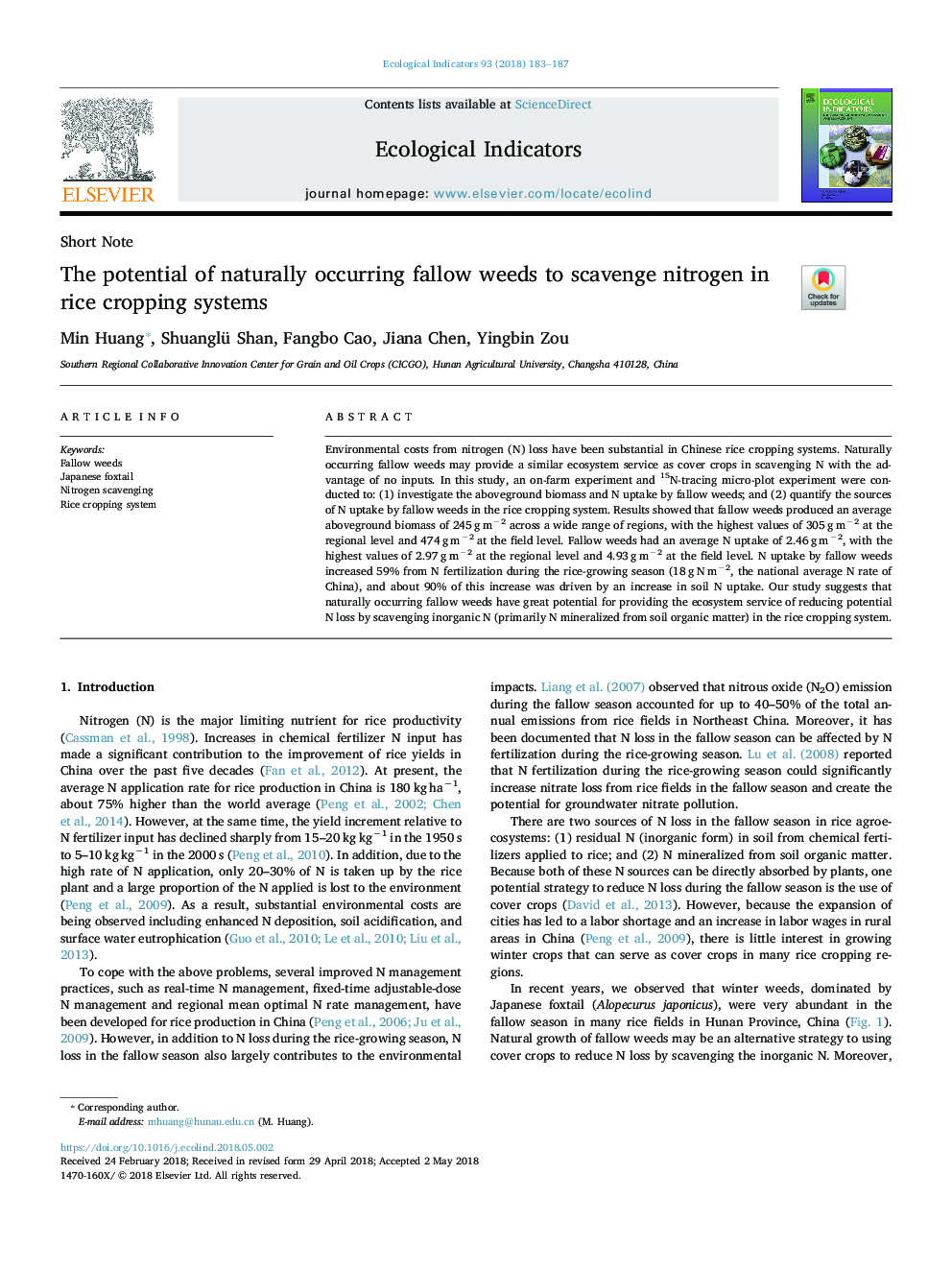| Article ID | Journal | Published Year | Pages | File Type |
|---|---|---|---|---|
| 8845109 | Ecological Indicators | 2018 | 5 Pages |
Abstract
Environmental costs from nitrogen (N) loss have been substantial in Chinese rice cropping systems. Naturally occurring fallow weeds may provide a similar ecosystem service as cover crops in scavenging N with the advantage of no inputs. In this study, an on-farm experiment and 15N-tracing micro-plot experiment were conducted to: (1) investigate the aboveground biomass and N uptake by fallow weeds; and (2) quantify the sources of N uptake by fallow weeds in the rice cropping system. Results showed that fallow weeds produced an average aboveground biomass of 245â¯gâ¯mâ2 across a wide range of regions, with the highest values of 305â¯gâ¯mâ2 at the regional level and 474â¯gâ¯mâ2 at the field level. Fallow weeds had an average N uptake of 2.46â¯gâ¯mâ2, with the highest values of 2.97â¯gâ¯mâ2 at the regional level and 4.93â¯gâ¯mâ2 at the field level. N uptake by fallow weeds increased 59% from N fertilization during the rice-growing season (18â¯gâ¯Nâ¯mâ2, the national average N rate of China), and about 90% of this increase was driven by an increase in soil N uptake. Our study suggests that naturally occurring fallow weeds have great potential for providing the ecosystem service of reducing potential N loss by scavenging inorganic N (primarily N mineralized from soil organic matter) in the rice cropping system.
Related Topics
Life Sciences
Agricultural and Biological Sciences
Ecology, Evolution, Behavior and Systematics
Authors
Min Huang, Shuanglü Shan, Fangbo Cao, Jiana Chen, Yingbin Zou,
